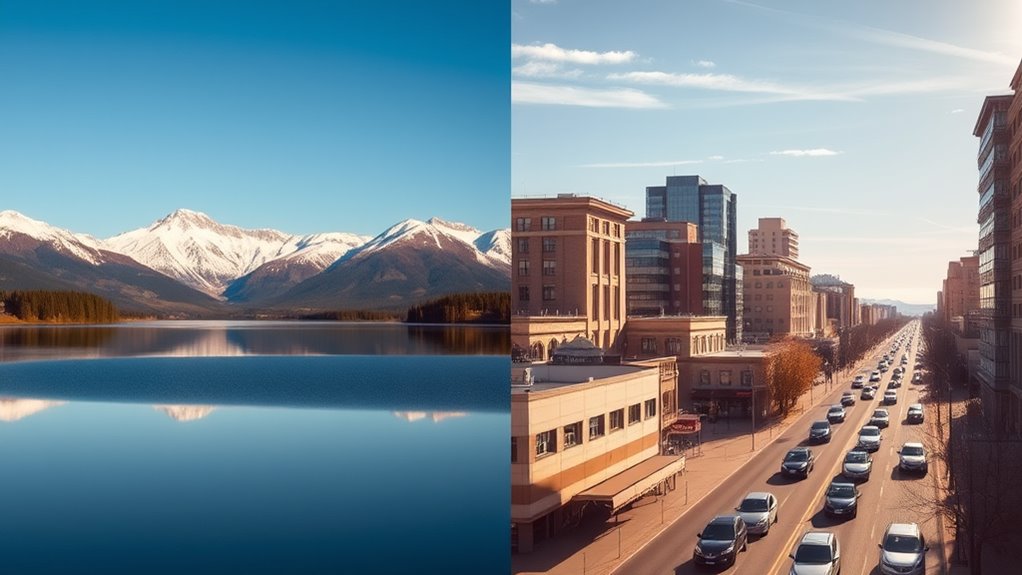When you compare SR-22 insurance with regular insurance in Alaska, the difference in cost is striking. SR-22 policies often come with higher premiums due to their association with high-risk drivers, averaging $59 per month for minimum coverage, while regular insurance tends to be more affordable. This disparity can lead you to question the true financial impact of maintaining an SR-22 on your budget. What factors contribute to this significant cost difference?
When you compare SR-22 insurance to regular insurance in Alaska, you'll notice considerable cost differences that stem from the high-risk classification associated with SR-22 policies. On average, SR-22 insurance costs about $59 per month for minimum coverage and $129 for full coverage. In contrast, regular insurance tends to have lower premiums since it doesn't include the risk surcharge that comes with high-risk designations. This disparity is evident in the average annual cost for SR-22 insurance, which hovers around $702 for minimum coverage, markedly higher than that of standard insurance policies.
SR-22 insurance in Alaska carries higher costs due to its high-risk classification, averaging $59 monthly for minimum coverage.
One of the factors contributing to the elevated costs of SR-22 insurance is the nature of the violations that typically necessitate this type of coverage. These violations often include serious offenses that categorize the driver as high-risk, which raises premiums. In Alaska, the SR-22 filing fee adds another layer of cost, typically ranging from $15 to $25. However, this is a one-time fee rather than an ongoing expense, which differentiates it from the continuous cost of monthly premiums. Additionally, the SR-22 insurance requirement is mandated for drivers who have committed certain violations, impacting their eligibility for regular coverage options.
Alaska's SR-22 policies must meet specific minimum liability requirements: $50,000 per person, $100,000 per accident, and $25,000 for property damage. While you can opt for additional coverage options similar to regular insurance—such as extensive and collision—these enhancements come with increased premiums. If you don't own a vehicle but need to drive someone else's, you can still secure a non-owner SR-22 policy, which is another consideration when evaluating your options. SR-22 is required for three years following serious traffic violations, which can significantly impact long-term costs.
The cost of SR-22 insurance also varies based on the specifics of the violation that led to its requirement. For example, some insurance providers may offer better rates than others. Companies like Progressive and State Farm typically present lower premiums for SR-22 coverage. In fact, Progressive offers the most affordable minimum coverage at approximately $41 per month. On the other hand, Geico tends to charge higher premiums, making it less favorable for SR-22 customers.
You must maintain your SR-22 coverage for up to three years, further influencing your overall insurance cost. If your policy lapses during this period, you'll need to reinstate it, often incurring penalties that can further increase your rates. Maintaining a clean driving record during the SR-22 period can play an essential role in reducing your insurance costs over time, as insurers often consider your driving history when determining your premium.
The presence of an SR-22 typically results in an average increase of around $16 per month compared to regular insurance. While Alaska's SR-22 insurance rates are lower than those in states like Michigan, they still represent a substantial financial commitment. Understanding these cost differences is fundamental for anyone traversing the complexities of high-risk insurance policies.
Conclusion
In Alaska, the cost difference between SR-22 and regular insurance can feel like a chasm, impacting your budget considerably. With SR-22 averaging $702 annually compared to regular policies, which offer lower premiums, the financial burden is clear. If you find yourself needing SR-22, it's crucial to shop around for the best rates, just as you would search for the best deal on a new car. Being informed can help you navigate this costly requirement more effectively.


